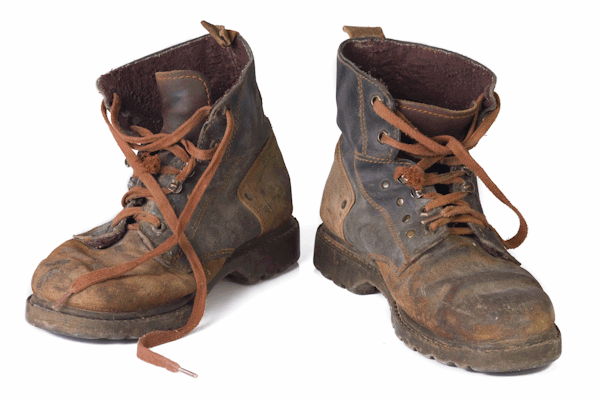By Tony Heath, PhD, CPHQ, Lean Consultant with OptumCare
What is the Gemba?
The gemba is a Japanese term for “the actual place”. All across the world, Lean enthusiasts think of the gemba as the actual place where value is created.
Toyoda Akido, of Toyota fame, describes gemba as “the flesh and blood” workplace. The term is physical rather than abstract, humane rather than mechanical, warm and compassionate rather than formal and bureaucratic.
There are a few other variations for the gemba:
- Japanese detectives call the crime scene “gemba”
- Japanese reporters say they are “reporting live from gemba”
- Universities may have a Global Executive Masters of Business Administration (not our type of gemba!)
Of course, any place where value is created is also a place where waste will also exist. You will find the gemba in all organizations: financial services, healthcare, government, retailing, restaurants, construction, and all the others. An office full of work cubes, a hospital emergency room, a drivers license facility, the check-in counter at the airport, a bottling line at a brewery, or your garage, are all places where value is created.

“Seek first to understand, then to be understood.”
– Stephen Covey’s 5th Habit
What is a Gemba Walk?
A gemba walk is a walking visit to the actual place where value is created, with a goal to observe, listen, learn, and help.
The walk may be limited to one work area or it could include the whole site.
A gemba walk is not a presentation in a conference room or a quick meeting in front of some performance reporting station.
It needs to be a deeper dive. It needs to be done when work is happening.
It needs be be done when you can focus. Leave your mobile phone on your desk.

Why do a Gemba Walk?
As the definition of a gemba walk emphasizes, the goal is to observe, listen, learn, and help.
Gemba walks allow people to see how value is created and get a sense of what is going well and what is not.
For a Lean organization, a gemba walk is focused upon the concept called standard work. A chance to see if standard work exists and is being followed.
A gemba walker can also witness how workers approach problem solving, continuous improvement, and teamwork.
Taking a gemba walk allows leaders and stakeholders to get out from behind their desks and go see what is happening.
It is crucial for gemba walkers to convey simple curiosity about the people and processes. The goal is not to audit or criticize. In some cases, a manager could choose to make a correction in the process, but this should not be the purpose of the gemba walk.

“A walking visit to the actual place where value is created, with a goal to observe, listen, learn, and help.”
– A Definition of Gemba Walk
Who are the Gemba Walkers?
There are all types of people who can take a gemba walk. Common gemba walkers include:
- Managers and Supervisors
- Extended Team Members
- Executive Leadership
- Customers and Suppliers
Let’s look closer at each one…

1. Managers and Supervisors
By far, the most common gemba walks are daily or hourly walks done by Managers and Supervisors of a work area.
These walks may account for 90% of all gemba walks. Managers and Supervisors want to know what is happening now compared to what should be happening now.
Typical questions include:
- What’s happening – right now?
- What do you do to keep improvements working?
- Are there any issues with the materials you are using?
- Is today’s work on track to meet customer needs?
- What quality challenges do you have?
- How do you decide what to do next?
- What problems do you have?
- What ideas do you have to improve the process?
- Where do you need help – right now?

2. Extended Team Members
The next most common gemba walkers are people who support the work area. Extended team members could be from HR, IT, EH&S, purchasing, scheduling, customer service, sales, finance, and many others.
Common questions include:
- What do you do?
- What is the standard work for your role?
- Where do you find a copy of the written document?
- What is the purpose of your process?
- Who depends on the outcome?
- What does the customer want from this process?
- How can I best support you?
- How often do you succeed in making your work process better?
Beyond the questions, these gemba walkers can learn how their colleagues do their work and where they could help.

3. Executive Leadership
Executives seek to understand how the cultural transformation is progressing.
It’s critical for executive walkers to demonstrate support for workers. Does everyone know how to meet customer requirements? Is there a culture of teamwork and continuous improvement?
Typical questions for executives walkers include:
- What do you do?
- How do you know what to do?
- Who else is involved on your team?
- What is the purpose of your process?
- Who depends on the outcome?
- What does the customer want from this process?
- How safe do you feel when you are at work?
- What do you do when you see a safety problem?
- Who is the customer for this specific order?
- Do you have the tools, materials, equipment, and information you need?
Beyond the questions, executive walkers should observe employee attitudes and general workplace organization.

4. Customers and Suppliers
Outsiders can make observations which no one has ever considered.
Customers can see how their orders are fulfilled. They might see where too much effort is going into unnecessary work or where more attention to detail is needed.
Suppliers can see how their materials, equipment, tools, or information is used. They might see where they can make an improvement or provide a suggestion to eliminate waste.
One special type of supplier is someone providing training or helping with an improvement project. They have a specific obligation to observe, listen, learn, and help.
Effective questions include:
- What is the purpose of your process?
- Who is the customer for this specific order?
- How do you like your work?
- Where does your process fit in the overall value stream?
- How is the quality of the production of your process?
- What do you do when you have an idea for an improvement?
- How do you feel about your role in creating your end product?
- How do you keep your area clean?
- What affects the time it takes to complete your process?
Customers and suppliers have a unique opportunity to observe, listen, learn, and help. They could discover how they can help the gemba workers by clarifying their requirements or changing their inputs. Big wins for everyone.

After the Walk
Many gemba walkers will want to provide feedback to the managers and supervisors and perhaps the company executives.
It should not be about criticizing individual employees or announcing what needs to be done. Instead, a gemba walker can share observations where waste is hindering the creation of value.
And don’t forget, a customer, supplier, or extended team member may have learned where they can go back and change their process to make work easier and more effective for the gemba they just walked!

Conclusion
During a recent gemba walk, I observed two workers, for a couple of hours, as they performed their work. I asked questions like those above and learned a lot about their work. I showed them respect. When the time was up and I had to move on, one of them turned and thanked me and commented: “You’re the first person who has ever shown real interest in what we do!”
I like to think everyone who visits the gemba with benevolent intent gets candid feedback like this. And I like to think workers go home and tell their family that the day went well.
Whatever you do, don’t have a list of memorized questions. The first answer you get may reveal a more interesting path. Like a detective, you need to follow the leads.
Open-ended questions get richer responses – and send you down the road less traveled.

“I took the one less traveled and that has made all the difference.”
– Robert Frost
About Tony Heath

Tony is a certified Lean process improvement consultant and a black belt for OptumCare, a business of UnitedHealth Group. He has been leading continuous improvement within the healthcare industry for 18 years. He holds a PhD in Family Therapy from Purdue and currently serves on its Midwest Board for the Association for Manufacturing Excellence.
Tony enjoys native gardening, making great coffee, and drinking great beer and good whiskey. He is a Lean fixer of everything broken.
His motto is: Better, better, better.
What is Lean?
Three Types of Value
6 Leadership Principles
What is Standard Work?
Root Cause Analysis: Your Mission…
Subscribe to our newsletter
References
Gemba Walks by James P. Womack
The Guide to Successful Gemba Walks by KaiNexus
A Few Profound Thoughts on Gemba Walks by KaiNexus
The 7 Habits of Highly Effective People by Stephen R. Covey
Organizational Improvement Acronyms by Transformance Advisors
Organizational Improvement Definitions by Transformance Advisors

